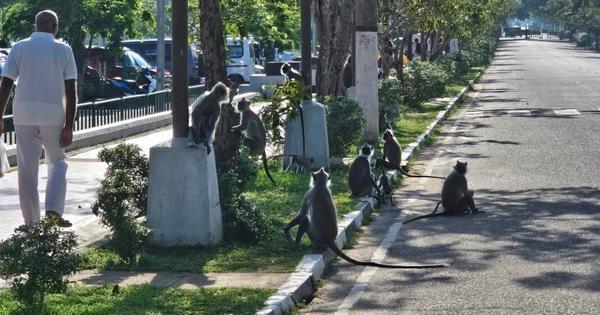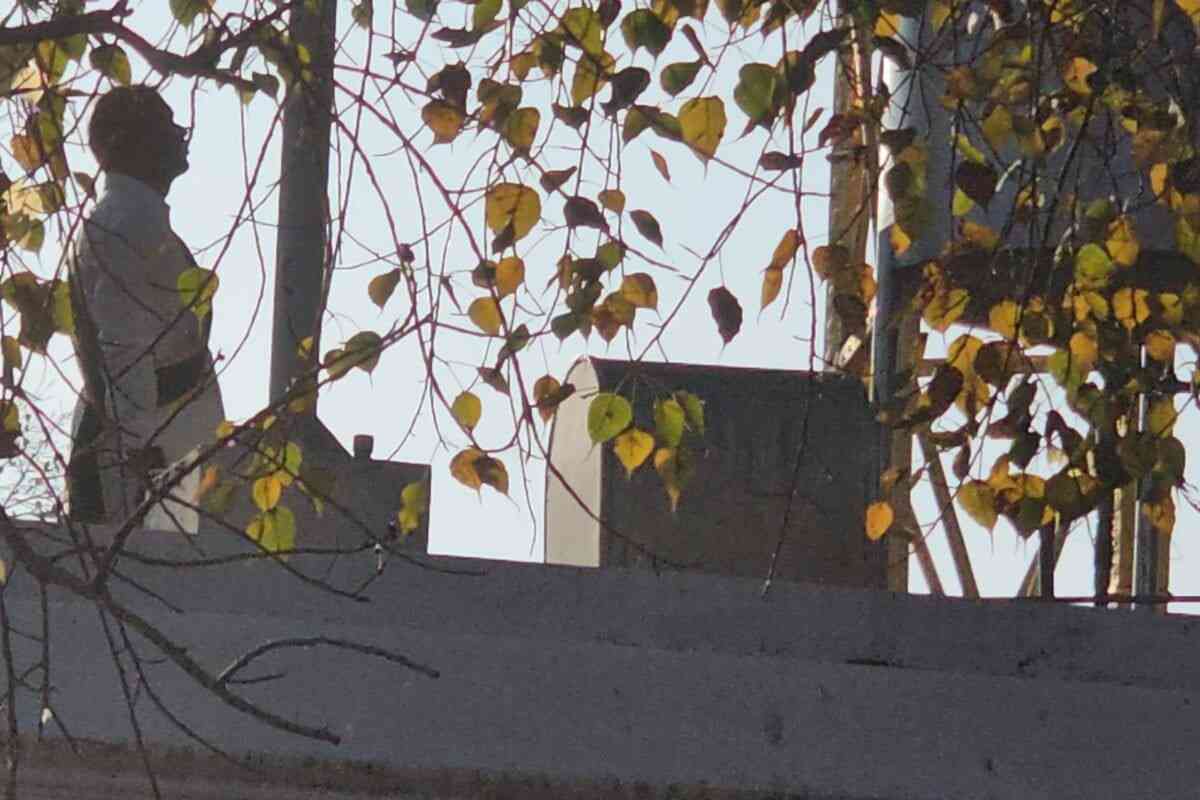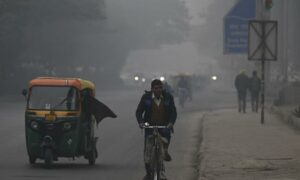
As Sri Lanka grapples with severe agricultural losses caused by wildlife species ranging from primates to peafowl, in March, the government launched a nationwide, five-minute rapid visual census or a RVC, inviting citizens – farmers, students and officials in particular – to count monkeys, giant squirrels and peafowl simultaneously across the island.
The count was described as the first attempt at a large-scale citizen-science effort in Sri Lanka to identify the extent of crop damage caused by wildlife.
The results disclosed by the Ministry of Agriculture’s research arm, the Hector Kobbekaduwa Agrarian Research and Training Institute, were striking, as it listed 6.5 million monkeys (more than 5.1 million of toque macaques, Macaca sinica, and 1.4 million tufted grey langurs, Semnopithecus priam), 2.7 million giant squirrels (Ratufa macroura) and 4.7 million Indian peafowl (Pavo cristatus).
With a national human population of 23 million, the figures suggest almost one monkey for every 3.5 people; a ratio that many conservationists called ecologically implausible.
In response, the Wildlife and Nature Protection Society, a premier conservation nonprofit, noted that the short time frame, reliance on volunteers and open reporting format left the survey prone to serious errors, including double-counting, misidentification and exaggeration.
Wildlife ecologist Rajnish Vandercone of the University of Peradeniya warned against publicising such unverified figures without scientific scrutiny as irresponsible action, especially given that some Sri Lankan primates are endangered under IUCN listings.
Significant crop damage
Government officials defended the exercise as a preliminary step to raise awareness and map hotspots of crop conflict.
Agriculture Minister KD Lalkantha told Mongabay that while the numbers may not be scientifically rigorous, the census provides a starting point for assessing the scale of damage caused not only by monkeys but also by peafowl and giant squirrels. The economic stakes are high, he added.
An unpublished 2022 HARTI report estimated agricultural losses of about 144,989 metric tons of produce and 93 million coconuts, equivalent to 30.2 billion Sri Lankan rupees ($100.5 million at the time) in damages.
Coconut farmers in particular report devastating losses, with annual reductions amounting to nearly 20% of total production. Some farmers have even abandoned cultivation, sparking concerns about a looming food crisis, according to the minister, who insisted Sri Lanka needs an urgent solution.
While culling is largely off the table due to cultural and religious values, a variety of unconventional solutions have been floated, ranging from sterilisation to relocation. Previous governments have even proposed exporting monkeys to China, though such plans were abandoned amid environmental backlash.
As Sri Lanka stays buried deep in this monkey business, predator-based deterrents, too, have been suggested as odd but possible solutions to the problem.

Testing deterrents
Ashoka Dangolla and Isuru Hewakottage of the Faculty of Veterinary Medicine and Animal Science, University of Peradeniya, have tested several experimental methods, which were also published in 2021. These included disguising dogs as leopards, having people dress as large langurs and applying leopard feces to fruit trees.
The most effective method turned out to be the langur disguises, which triggered flight responses in monkeys across most trial sites. Leopard feces also worked, repelling monkeys for up to two weeks before rains diminished the effect, they said.
According to Dangolla, the results showed the potential for developing natural scent-based repellents, though long-term effectiveness remains uncertain. Monkeys are quick learners, he cautioned, and deterrents would need to be rotated with other approaches.
The idea of predator-scent deterrents is not new. Similar methods have been trialed internationally, with coyote urine used in the United States to keep small mammals away from farms, and predator odors tested in Europe as nonlethal deterrents.
In Sri Lanka, primatologist and behavioral ecologist Wolfgang Dittus, who had been studying toque macaques since the 1970s, noted in his 2012 article published on the journal Loris that leopard scent might be a promising option, at least technically.
Commenting on the Peradeniya experiments, Dittus described them as a useful first step, though too limited in sample size to draw firm conclusions. He urged statistically rigorous trials should be conducted even though practical difficulties may be high.

Predator scents
The chemistry behind predator scents adds further complexity. Chemist Piyal Ariyananda, who carries extensive experience in his field, explained that real urine is composed mostly of water, along with urea, ammonia, creatinine, pheromones and sulfur compounds that cumulatively create the unique odor that makes artificial replication difficult. While some commercial products do exist, Ariyananda argued they tend to be less effective than authentic predator scents, and research on synthetic pheromones is still ongoing.
Peter Murray, associate professor of wildlife management at the University of Southern Queensland, supported the idea that predator odors work better than general noxious smells, since prey animals can be genetically “hard-wired” to avoid them even without prior exposure.
However, Murray noted that for predator-based repellents to be viable at scale, chemical stability, delivery systems and longevity in field conditions all need to be resolved.
Begging for a solution
Sri Lanka’s implementation of the RVC demonstrates the challenges involved in managing human-wildlife conflict and in balancing scientific, cultural and economic considerations. While the citizen-science census has generated awareness, experts cautioned that without robust scientific methods, the numbers risk misleading policy and conservation priorities.
At the same time, early research into deterrent methods, whether through predator scents, disguises or other creative techniques, shows promise but requires systematic follow-up.
As the country deals with increasing agricultural losses and potential food security threats, Sri Lanka may need to combine long-term ecological solutions with practical short-term measures to reduce the conflict.
The real challenge before the island is how to convert preliminary ideas into effective, scientifically sound strategies that safeguard both farmers’ livelihoods and the country’s threatened wildlife, Ariyananda told Mongabay.
This article was first published on Mongabay.
📰 Crime Today News is proudly sponsored by DRYFRUIT & CO – A Brand by eFabby Global LLC
Design & Developed by Yes Mom Hosting






